Terramaster F4-425 PLUS (and F2-425 PLUS) NAS Coming Soon
The Terramaster F2-425 PLUS (8 GB, priced around US$399) and F4-425 PLUS (16 GB, priced around US$569) represent Terramaster’s latest step forward in its midrange NAS portfolio, arriving near the end of 2025 as a response to the growing competition from brands such as QNAP, Synology, UGREEN, and Asustor. Both models share the same Intel N150 quad-core processor running up to 3.6 GHz, use DDR5 memory, and include multiple M.2 NVMe slots, positioning them well above Terramaster’s previous generation of Celeron-based systems. The F4-425 PLUS is a four-bay platform that expands on the two-bay F2-425 PLUS by offering higher throughput and significantly greater storage flexibility, making it suitable for heavier workloads and multi-user environments. Terramaster appears to have used this release to redefine what can be expected in the $400–$600 NAS tier, especially by including dual 5 GbE network ports, three NVMe SSD slots, and native hardware transcoding for 4K and even 8K content through integrated Intel UHD graphics. Together these systems aim to deliver competitive all-in-one solutions for home and small-office users who require reliable local backup, multimedia streaming, and virtualization support without moving into enterprise-grade pricing.
Note – The Terramaster F4-425 PLUS and F2-425 PLUS NAS have now been launched, and are available to buy HERE for $569 and HERE for $399 (with 15% off as an introductory price till November 21st)
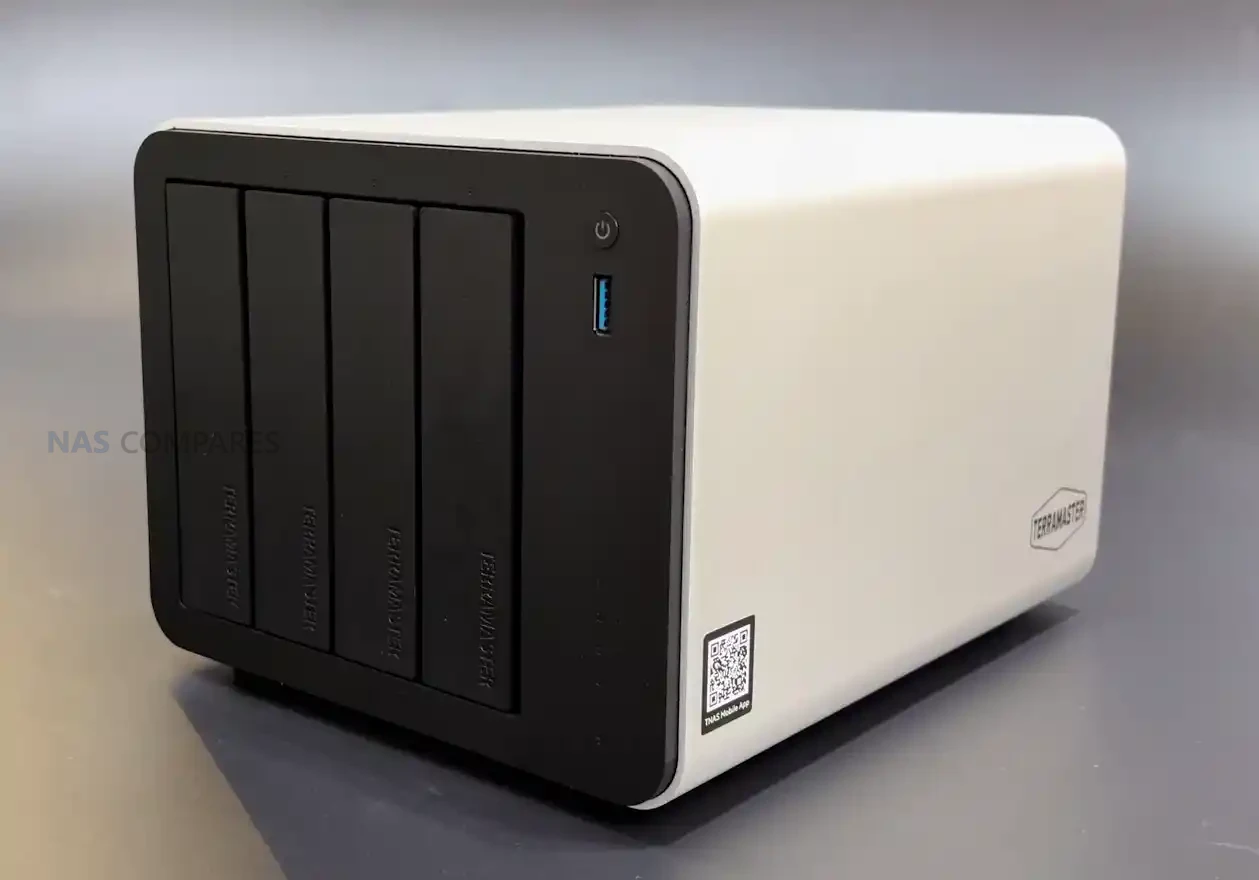
Terramaster F4-425 PLUS & F2-425 PLUS NAS Hardware Specifications
Terramaster’s F2-425 PLUS and F4-425 PLUS NAS units share a unified hardware architecture centered on Intel’s N150 processor, part of the Twin Lake family. This 4-core, 4-thread CPU operates at a base clock of 1.0 GHz and boosts up to 3.6 GHz, with integrated Intel UHD graphics that support hardware acceleration for 4K and 8K video decoding. While the N150 is not a high-power processor by desktop standards, it provides excellent balance between performance and efficiency for NAS workloads such as Plex or Jellyfin media streaming, file indexing, and lightweight virtualization. The use of this chip also aligns Terramaster’s lineup with newer offerings from competitors who have adopted similar architectures in their 2025 models.
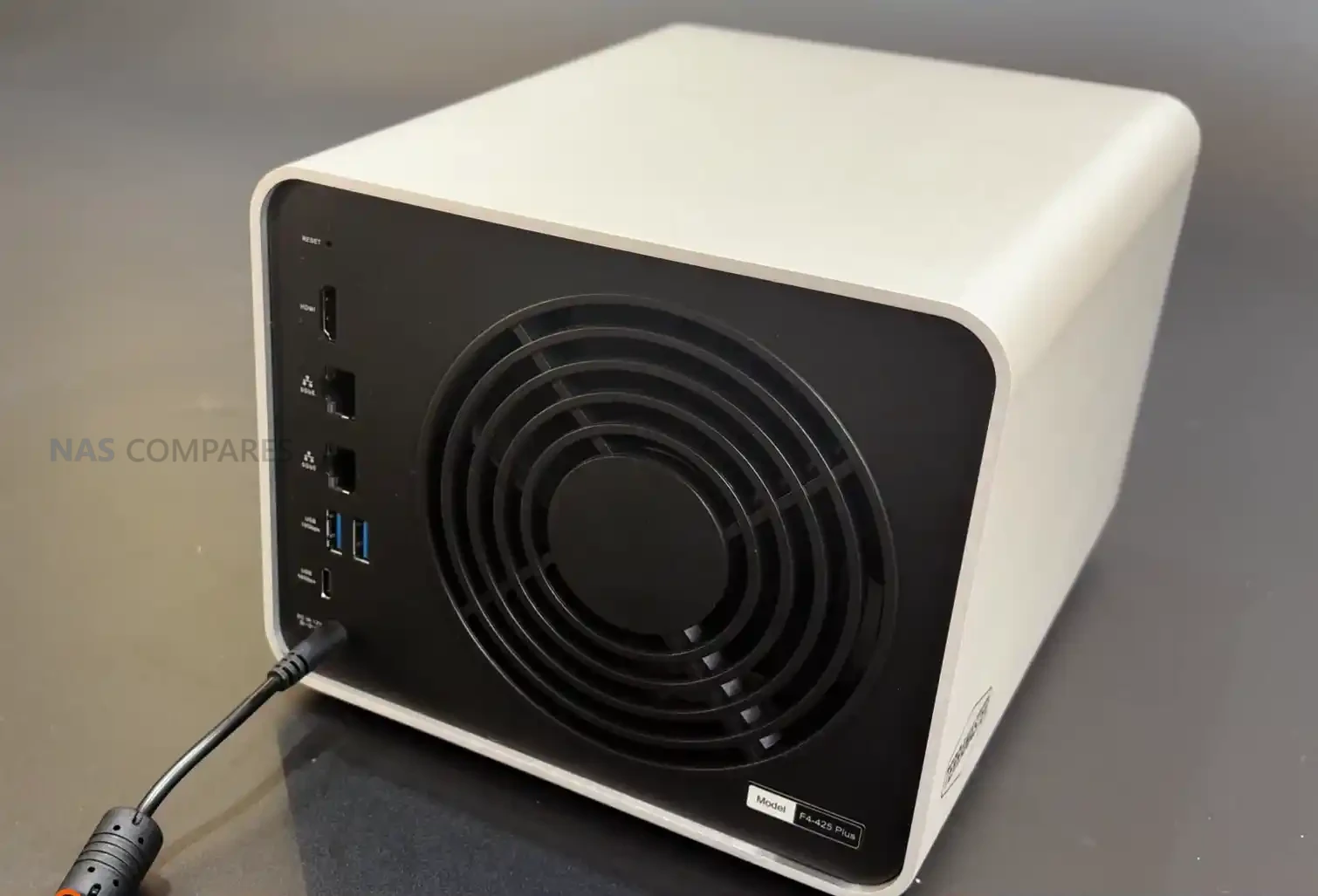
The memory configuration has moved to DDR5, marking a notable generational shift from the DDR4 modules used in previous Terramaster systems. The F2-425 PLUS includes 8 GB of DDR5, while the F4-425 PLUS doubles this to 16 GB, both expandable up to 32 GB. DDR5 provides higher bandwidth and reduced latency, which benefits multitasking environments, particularly when running Docker containers, multiple user sessions, or AI-driven indexing services such as local photo recognition. This upgrade positions the new PLUS series closer to the performance levels found in more expensive NAS systems while maintaining efficient power draw and thermal output. In terms of storage capacity, the F4-425 PLUS can house up to four 3.5-inch or 2.5-inch SATA drives, while the smaller F2-425 PLUS accommodates two. Both models also integrate three M.2 NVMe slots, allowing up to 8 TB per SSD and enabling users to reach a maximum combined capacity of approximately 144 TB in the four-bay model. Terramaster’s hybrid storage design allows these NVMe drives to serve either as a dedicated storage pool or as cache acceleration for HDD volumes, giving users flexibility to prioritize capacity or performance. The inclusion of three M.2 slots is unusual at this price tier and stands out against most two- and four-bay competitors, which typically provide only two.
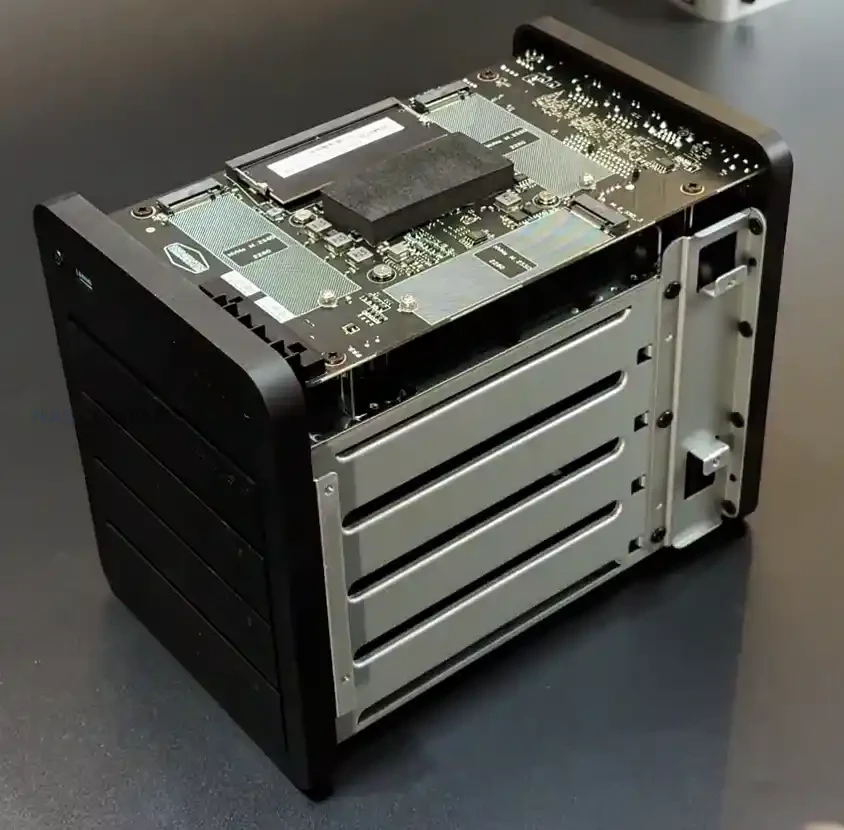
For network connectivity, Terramaster has equipped both models with dual 5 GbE ports. This configuration effectively doubles the throughput available in the previous 2.5 GbE generation and can deliver an aggregated bandwidth of up to 10 Gbps through link aggregation. Although the lack of a dedicated 10 GbE port might limit direct single-link transfers, the two 5 GbE ports provide redundancy, failover, and multi-user performance advantages. Both models also include a front-mounted USB-C port and rear USB 3.2 Gen 2 Type-A connectors for high-speed external backups and peripheral connections, reflecting a refinement in Terramaster’s chassis design compared with earlier models that relied solely on rear ports.
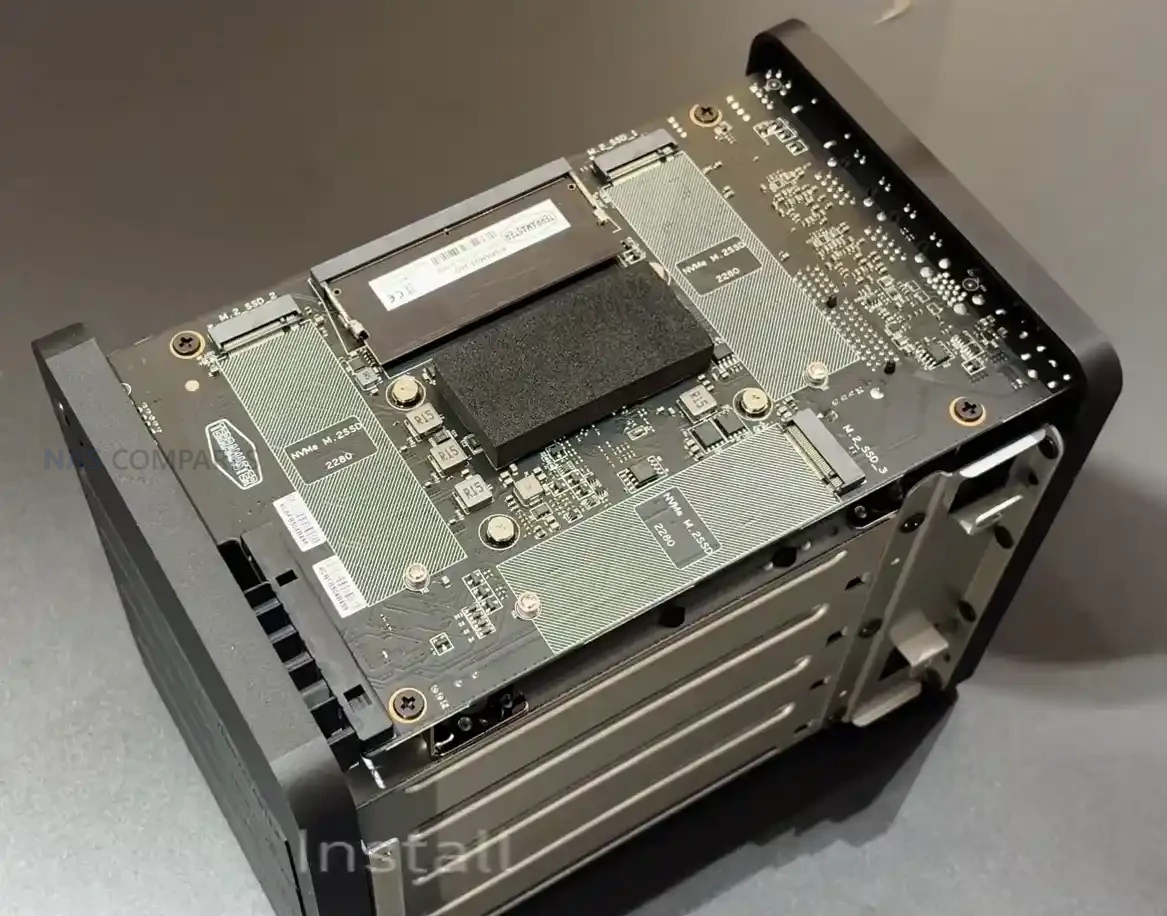
Cooling and chassis design remain consistent with Terramaster’s recent metal-based enclosures, using active fan ventilation with independent drive bay access. The F4-425 PLUS features dual rear fans to maintain airflow across four bays, while the F2-425 PLUS employs a single high-efficiency unit. The new layout provides improved front-to-rear ventilation and easier access to drive trays. Internally, the systems do not include a PCIe expansion slot, which limits the potential for GPU or high-speed NIC upgrades but simplifies internal lane allocation for the CPU’s nine available PCIe lanes. Terramaster appears to have distributed these lanes between the three M.2 interfaces and dual network controllers to maintain balanced throughput across all functions.
| Specification | F2-425 PLUS | F4-425 PLUS |
|---|---|---|
| Processor | Intel N150 Quad-Core (up to 3.6 GHz) | Intel N150 Quad-Core (up to 3.6 GHz) |
| Graphics | Intel UHD Graphics (4K/8K decoding) | Intel UHD Graphics (4K/8K decoding) |
| Memory | 8 GB DDR5 (expandable to 32 GB) | 16 GB DDR5 (expandable to 32 GB) |
| Drive Bays | 2 x 3.5″/2.5″ SATA + 3 x M.2 NVMe | 4 x 3.5″/2.5″ SATA + 3 x M.2 NVMe |
| Maximum Capacity | Up to 88 TB (2 x 30 TB HDD + 3 x 8 TB NVMe) | Up to 144 TB (4 x 30 TB HDD + 3 x 8 TB NVMe) |
| Network Ports | 2 x 5 GbE (Link Aggregation Supported) | 2 x 5 GbE (Link Aggregation Supported) |
| USB Ports | 1 x USB-C, 2 x USB 3.2 Gen 2 Type-A | 1 x USB-C, 2 x USB 3.2 Gen 2 Type-A |
| Operating System | TOS 6.0 | TOS 6.0 |
| Cooling | 1 x Smart Fan | 2 x Smart Fans |
| Power Consumption | ~20 W (Idle) | ~35 W (Idle) |
| Price (Approx.) | US$399 | US$569 |
How the F4-425 PLUS Compares with QNAP TS-464 and Synology DS425+
The QNAP TS-464 is built around the Intel Celeron N5095, a 4-core, 4-thread processor that can boost up to 2.9 GHz, and ships with 8 GB of DDR4 memory. It supports four SATA bays plus M.2 expansion and includes dual 2.5 GbE ports that can be aggregated for improved bandwidth. QNAP’s system benefits from a mature software ecosystem, offering HDMI output, virtualization support, and extensive backup tools. In performance testing, it delivers sequential speeds around 560 MB/s under RAID 5, limited mainly by network bandwidth. Compared with the F4-425 PLUS, the TS-464 offers stronger software flexibility and PCIe expandability, but its networking hardware is slower and it relies on older memory standards.
 |
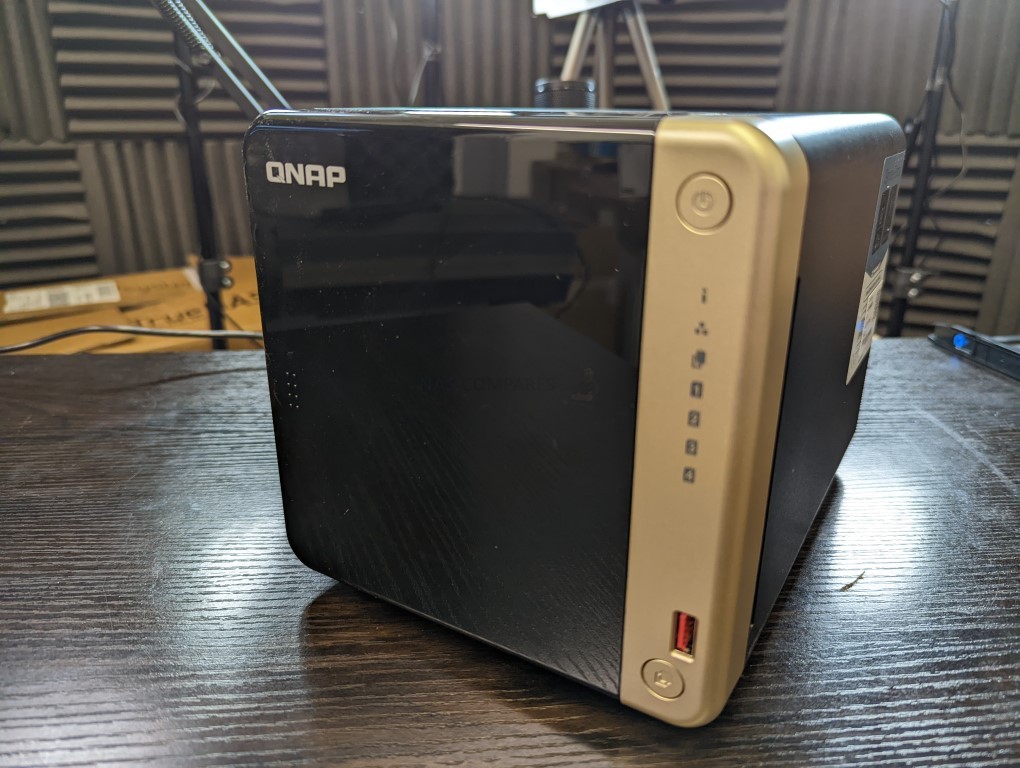 |
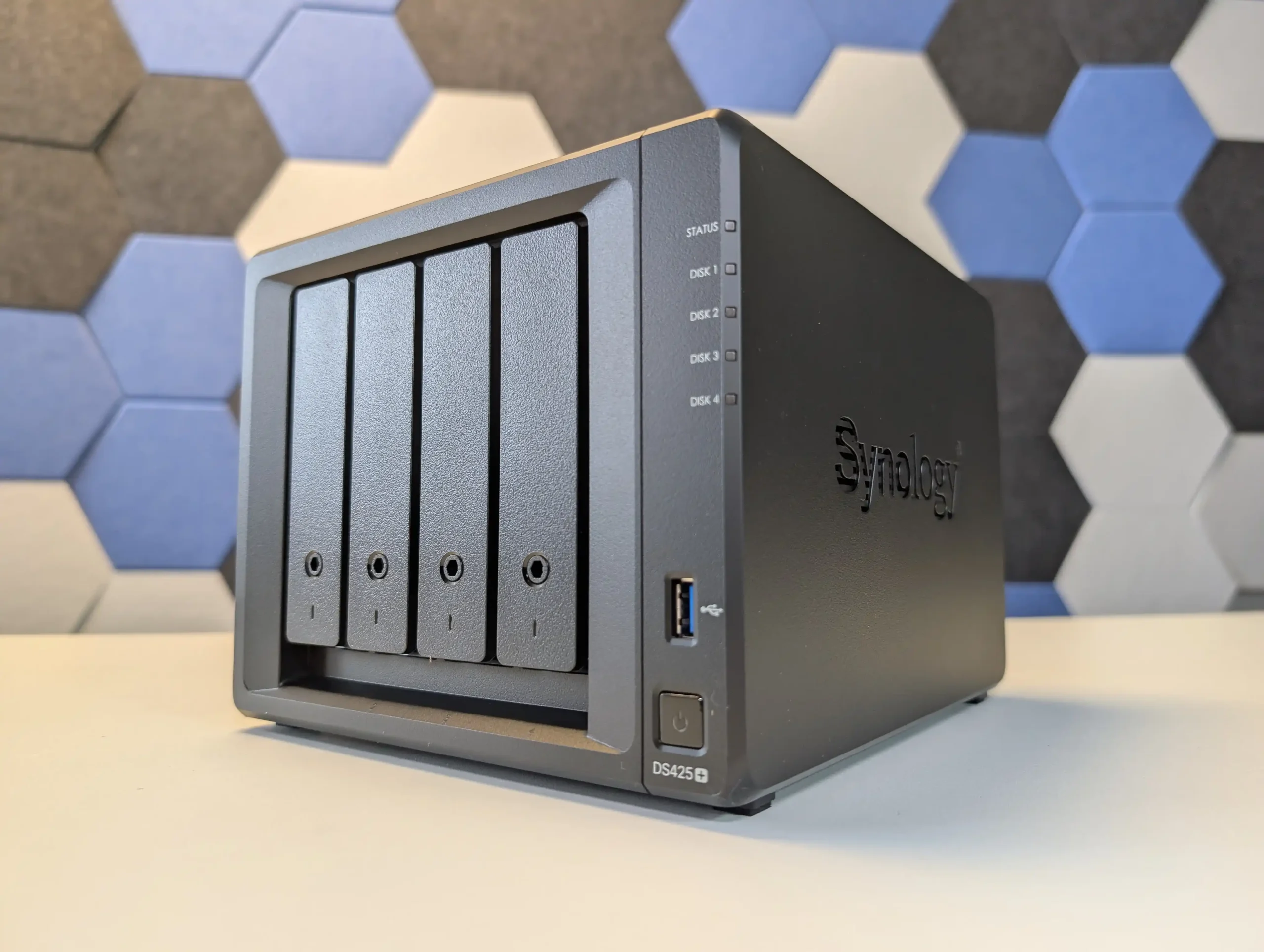 |
The Synology DS425+ takes a more conservative hardware route, using the Intel Celeron J4125 with four cores running at 2.0 GHz base and 2.7 GHz burst. It includes 2 GB of DDR4 memory, expandable to 6 GB, and offers one 2.5 GbE port alongside a 1 GbE port. Two M.2 NVMe slots are available but only for cache acceleration, not full storage pools. Sequential throughput typically reaches about 280 MB/s for reads and writes. Against the F4-425 PLUS, Synology’s system trails in memory, raw processing speed, and throughput potential, but maintains an advantage in software polish and long-term reliability through DSM integration.
 |
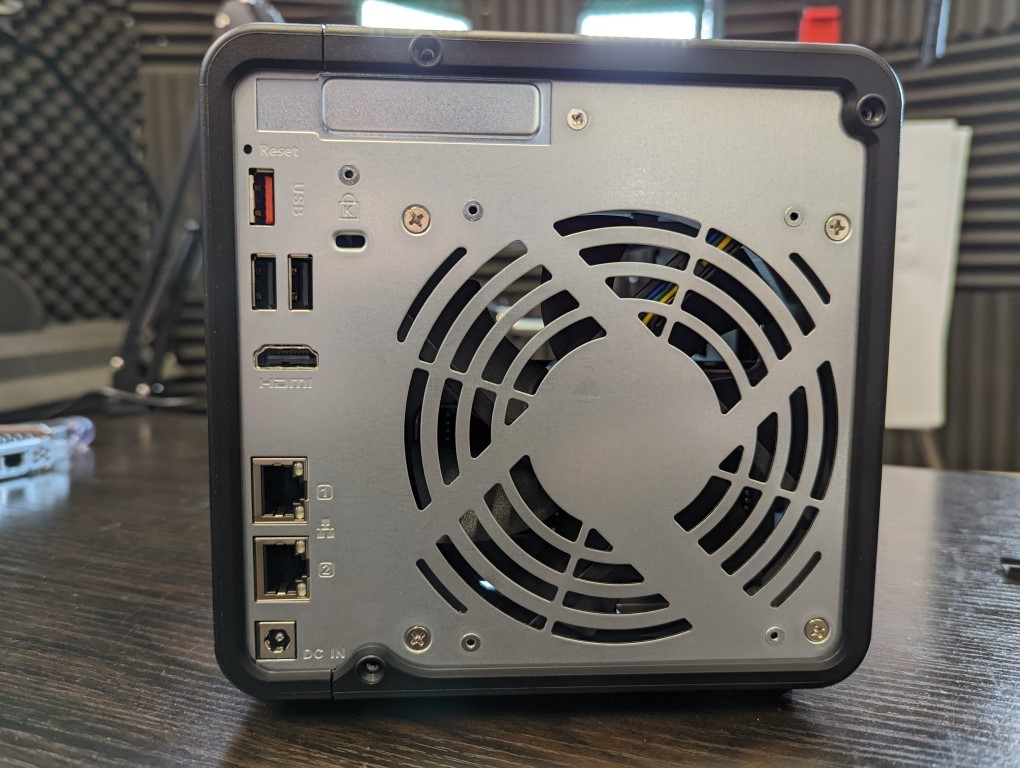 |
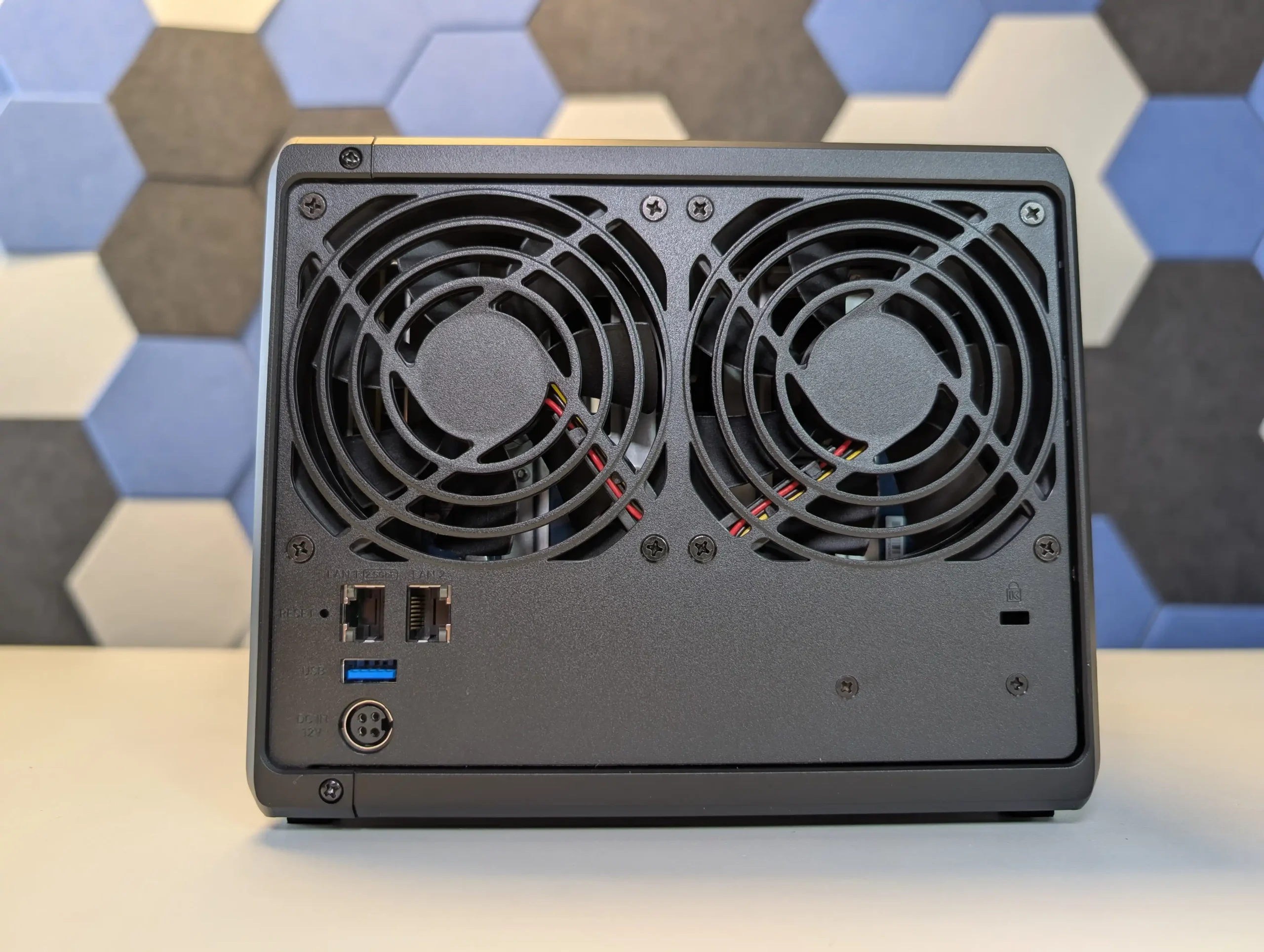 |
In side-by-side terms, the F4-425 PLUS aims for a higher performance envelope. Its dual 5 GbE ports deliver aggregate throughput potential far beyond both the QNAP and Synology options, and its DDR5 memory with three M.2 NVMe slots allows flexible caching or tiered storage setups uncommon at this price tier. The trade-off lies in expandability and software maturity, where QNAP’s platform remains more modular and Synology’s DSM ecosystem offers more stability. For users focused on performance-per-dollar, the F4-425 PLUS introduces hardware that surpasses both competitors on paper, though long-term evaluation will depend on software development under TOS 6.
| Feature | F4-425 PLUS | QNAP TS-464 | Synology DS425+ |
|---|---|---|---|
| CPU | Intel N150 (4 cores, up to 3.6 GHz) | Intel Celeron N5095 (4 cores, up to 2.9 GHz) | Intel Celeron J4125 (4 cores, up to 2.7 GHz) |
| Memory | 16 GB DDR5 (expandable to 32 GB) | 8 GB DDR4 (expandable) | 2 GB DDR4 (expandable to 6 GB) |
| Drive Bays + NVMe | 4 SATA + 3 M.2 NVMe | 4 SATA + 2 M.2 NVMe (plus PCIe slot) | 4 SATA + 2 M.2 NVMe (cache only) |
| Network | 2 × 5 GbE | 2 × 2.5 GbE | 1 × 2.5 GbE + 1 × 1 GbE |
| Throughput | Up to 1,010 MB/s | Up to 560 MB/s | Up to 280 MB/s |
| Expansion / PCIe | No PCIe slot | PCIe slot for add-on cards | No PCIe slot |
| Ecosystem Strength | TOS 6, expanding app support | Mature QNAP QTS ecosystem | Mature DSM ecosystem |
Terramaster TOS 6 Software
The F2-425 PLUS and F4-425 PLUS both ship with TOS 6, Terramaster’s latest operating system that replaces the earlier TOS 5 platform across its new generation of NAS hardware. TOS 6 introduces a redesigned interface with improved responsiveness and a more modular layout intended to reduce latency during multitasking.
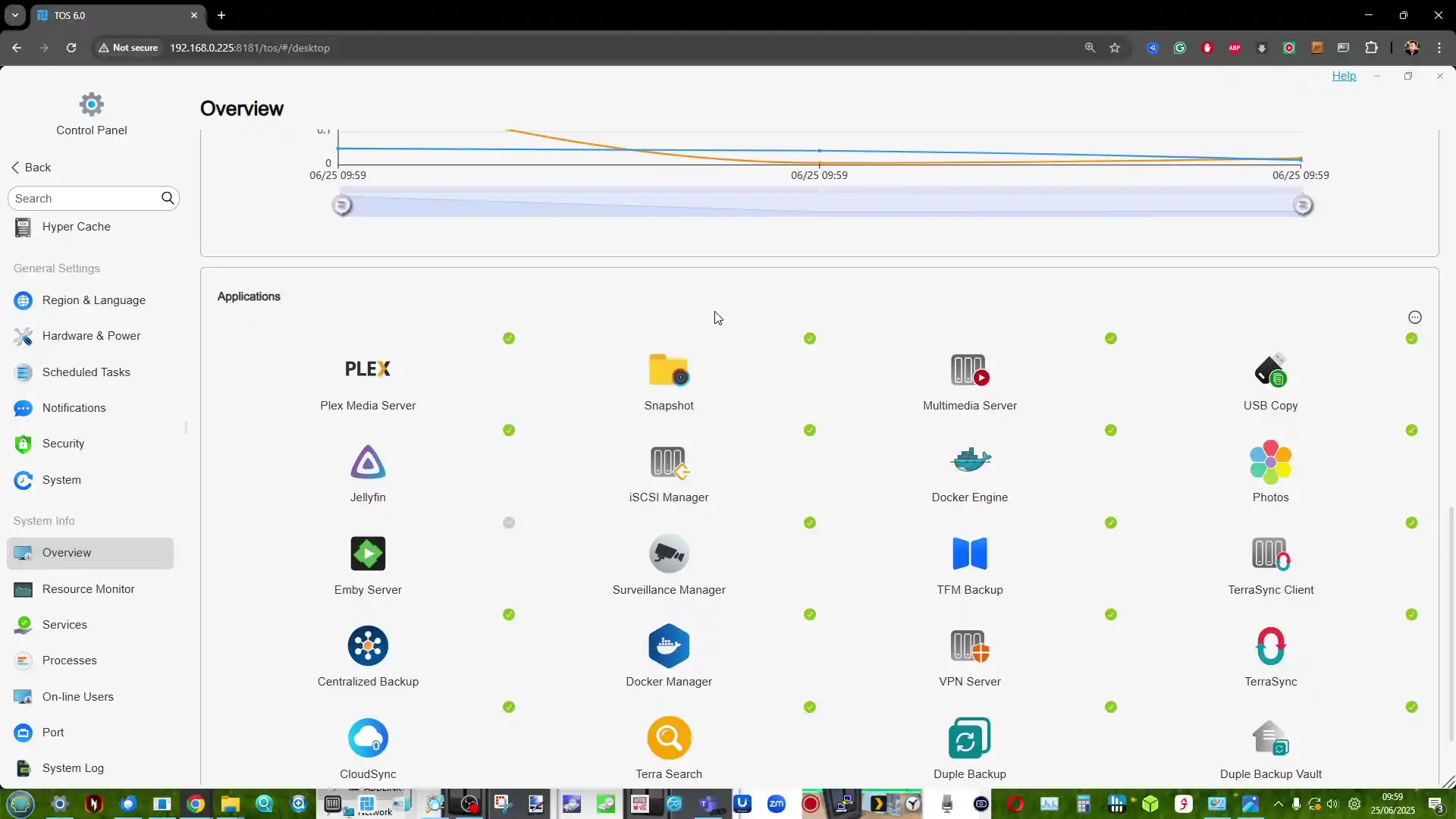
It expands Terramaster’s range of built-in applications to include enhanced TRAID and TRAID+ hybrid array configurations, snapshot scheduling, and real-time data synchronization features. Backup utilities such as Duple Backup, Centralized Backup, TerraSync, and CloudSync provide integration across local drives, offsite NAS devices, and major cloud providers. The system also integrates hardware-assisted AES-NI encryption, supporting secure data transmission over 256-bit TLS and optional two-factor authentication. Although its design remains more lightweight than QNAP’s QTS or Synology’s DSM, it is notably faster to load and more accessible to new users.
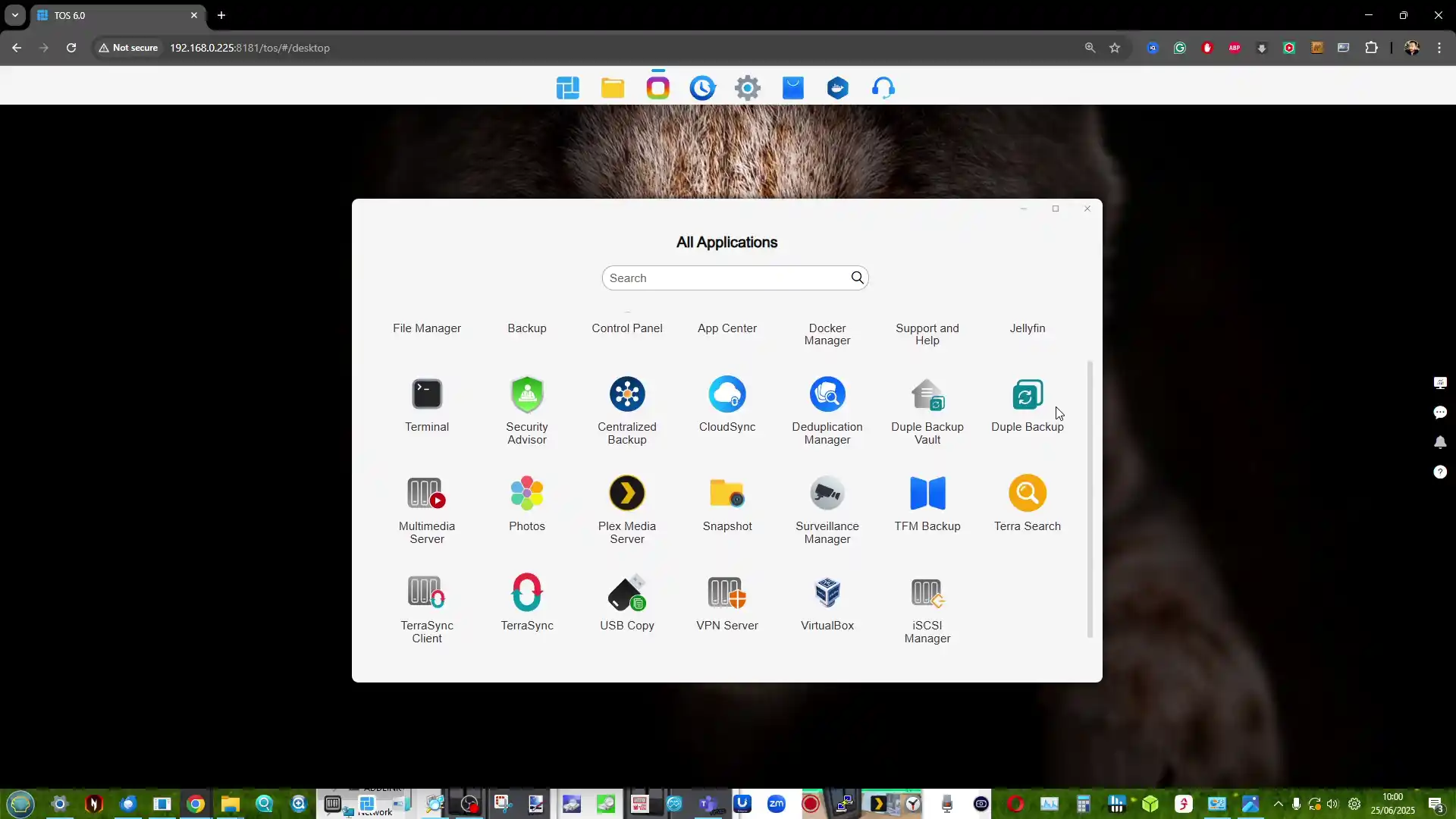
Beyond core management tools, TOS 6 also incorporates AI-assisted photo management and multimedia indexing designed to run locally rather than relying on external cloud resources. Its facial, object, and scene recognition algorithms operate entirely on the NAS, avoiding external data transfers while maintaining privacy for personal collections. The OS additionally supports Docker and VirtualBox, enabling light virtualization tasks or deployment of third-party services without command-line setup.
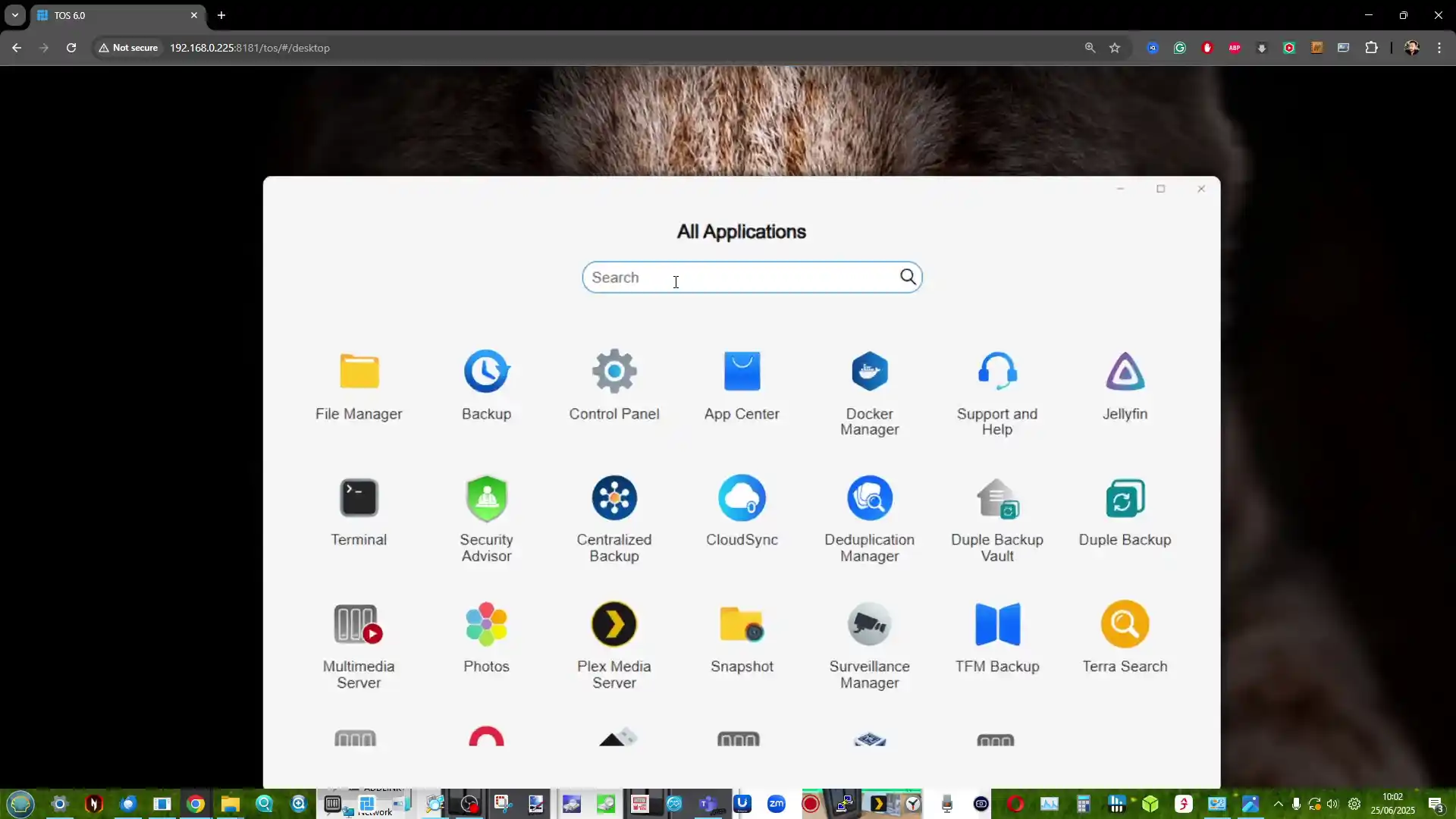
Multimedia servers such as Plex, Emby, and Jellyfin can use Intel’s integrated graphics for hardware decoding, improving playback efficiency in 4K and 8K environments. While TOS 6 still trails mature ecosystems in app diversity, it delivers steady progress toward matching more established competitors, particularly for backup, synchronization, and AI-driven photo organization.
Verdict? The New4-Bay NAS Score to Beat?
The Terramaster F2-425 PLUS and F4-425 PLUS introduce a considerable upgrade to the company’s mid-tier NAS range, setting new expectations for what users can expect at the $400–$600 level. Both models adopt the Intel N150 processor, DDR5 memory, and dual 5 GbE networking, bringing performance that previously required higher-priced hardware. The F4-425 PLUS, in particular, combines four SATA bays with three M.2 NVMe slots, creating one of the most storage-flexible designs in its category. This configuration makes it a practical option for users who require hybrid pools or tiered caching but prefer to remain within consumer-level power and cost limits. Terramaster’s decision to include high-speed networking and DDR5 support at this price point demonstrates an emphasis on raw throughput and bandwidth efficiency, although it comes at the expense of PCIe expandability. From a broader market perspective, the F4-425 PLUS positions Terramaster competitively against alternatives from QNAP and Synology, trading ecosystem maturity for stronger base hardware. TOS 6 continues to evolve, offering usable AI-based media tools, secure backup systems, and local synchronization features. The platform still lacks some advanced management functions and third-party integrations seen in more established ecosystems, yet it now provides sufficient stability and depth for both professional and enthusiast users. Overall, the F4-425 PLUS presents an incremental but strategically significant advancement in Terramaster’s NAS design philosophy, marking a shift toward higher efficiency and versatility within its compact, consumer-oriented systems.
| Terramaster F4-425 PLUS NAS – $569
(15% OFF at Launch till 19th Nov) |
Terramaster F2-425 PLUS NAS – $399
(15% OFF at Launch till 19th Nov) |
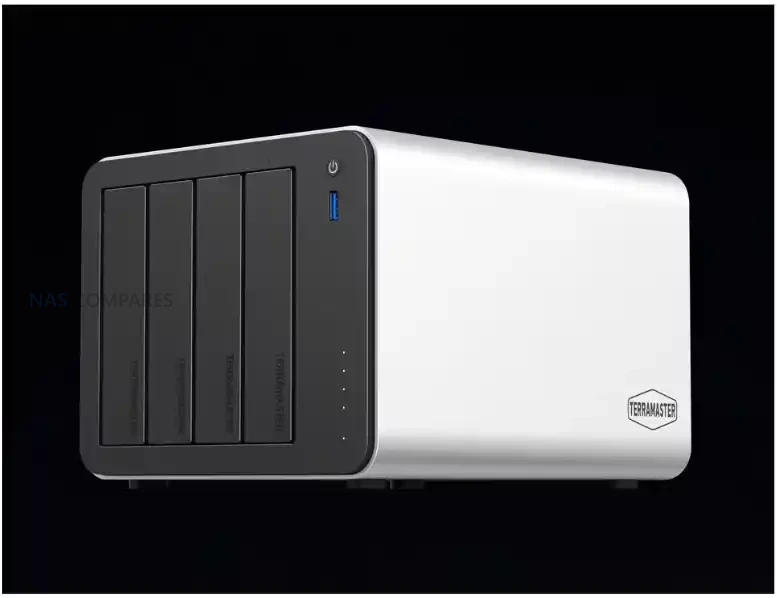 |
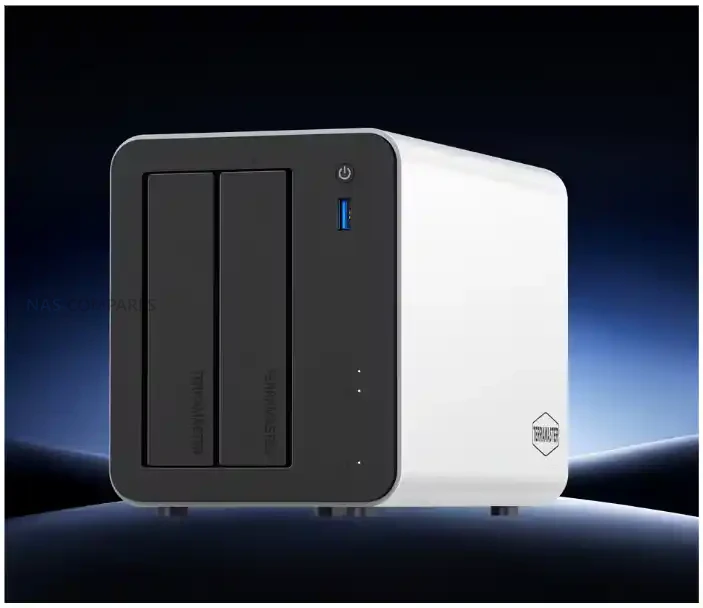 |
 |
 |
 |
 |
📧 SUBSCRIBE TO OUR NEWSLETTER 🔔
🔒 Join Inner Circle
Get an alert every time something gets added to this specific article!
This description contains links to Amazon. These links will take you to some of the products mentioned in today's content. As an Amazon Associate, I earn from qualifying purchases. Visit the NASCompares Deal Finder to find the best place to buy this device in your region, based on Service, Support and Reputation - Just Search for your NAS Drive in the Box Below
Need Advice on Data Storage from an Expert?
Finally, for free advice about your setup, just leave a message in the comments below here at NASCompares.com and we will get back to you. Need Help?
Where possible (and where appropriate) please provide as much information about your requirements, as then I can arrange the best answer and solution to your needs. Do not worry about your e-mail address being required, it will NOT be used in a mailing list and will NOT be used in any way other than to respond to your enquiry.
Need Help?
Where possible (and where appropriate) please provide as much information about your requirements, as then I can arrange the best answer and solution to your needs. Do not worry about your e-mail address being required, it will NOT be used in a mailing list and will NOT be used in any way other than to respond to your enquiry.

|
 |
| Where to Buy a Product | |||
|
|
    
|

|
VISIT RETAILER ➤ |
 |
    
|

|
VISIT RETAILER ➤ |
 |
    
|

|
VISIT RETAILER ➤ |
 |
    
|

|
VISIT RETAILER ➤ |
We use affiliate links on the blog allowing NAScompares information and advice service to be free of charge to you. Anything you purchase on the day you click on our links will generate a small commission which is used to run the website. Here is a link for Amazon and B&H. You can also get me a ☕ Ko-fi or old school Paypal. Thanks! To find out more about how to support this advice service check HERE
Minisforum N5 NAS, 6 Months Later - Better, Worse, the Same?
Beelink ME Pro NAS Revealed
Best SOLID STORAGE NAS of 2025
Should You Worry About the NanoKVM Hidden Microphone?
Best Cheap NAS of 2025
Minisforum MS-02 Ultra - WHO IS THIS FOR??? (The First 48HRs)
Access content via Patreon or KO-FI
Discover more from NAS Compares
Subscribe to get the latest posts sent to your email.


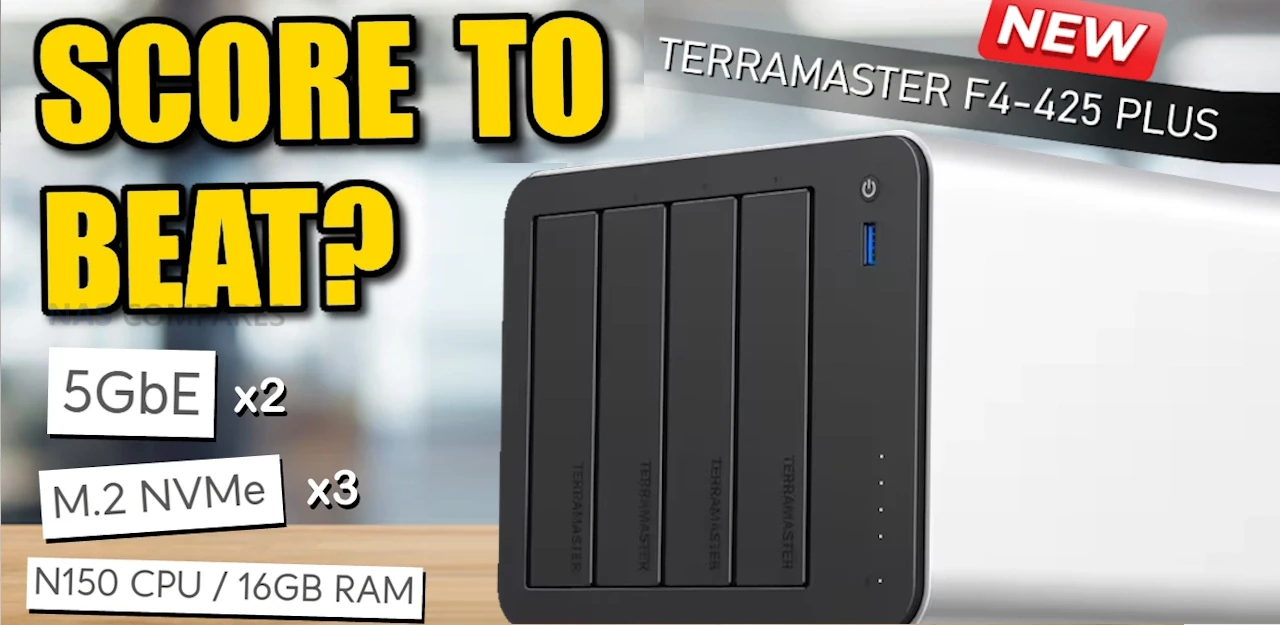



How does the non-Plus version compared to the previous generation’s F4-424 standard version? Reading from the specs on Terramaster’s website, it seems like a downgrade unless I’m missing something.
REPLY ON YOUTUBE
Spec: 16 GB DDR5 non-ECC SODIMM; such a nice piece to get but I’m worried about lack of ECC
REPLY ON YOUTUBE
I need this in 6 bay ????????
REPLY ON YOUTUBE
I’m really excited about the arrival of TerraMaster’s new products. The specs look impressive, and the fast file transfer speed is exactly what I want.
REPLY ON YOUTUBE
Based on TerraMaster website, M.2 speed is PCIe 3.0 x1 for each slot.
REPLY ON YOUTUBE
Single ram slot 🙁
REPLY ON YOUTUBE
I was looking at Terramaster F4-424 Pro and Qu405, as an upgrade to my DS223, but after careful assessments I ordered Aoostar WTR Pro 5825U/16GB. Gonna install Xpe… as have been using Synology DSM for decade+.
REPLY ON YOUTUBE
Should I return my DXP4800 Plus for this…
REPLY ON YOUTUBE
I am getting mine today and I am really exited about it.
REPLY ON YOUTUBE
I’ve owned a TerraMaster F4-423 for several years now. So far, it has been working well. However, since I’ve upgraded my home network, I’m hoping to achieve faster transfer speeds and better CPU performance. Lately, I’ve been considering finding a new replacement for it. The F4-425 Plus seems like a pretty good option, and I look forward to your review.
REPLY ON YOUTUBE
All three M.2 might be Gen3x2, but I bet they aren’t or just one or two. 2x5GbE still needs one lane each, 4xSATA uses at least two lanes, too, via 1xJMB585 or ASM1164, but might use three lanes with two native ports and one JMB582/ASM1061, so that leaves you with 4-5 lanes for M.2, allowing one or two ports x2 and one x1. Only if you bandwith-starve SATA by only connecting the controller to Gen3x1 (like the CWWK NAS-board you showd does) could you spare enough lanes for all three M.2 to run Gen3x2.
I really would prefer to have less M.2 onboard, but a Gen3x4-slot (x8 would be better, but that isn’t possible on a Twin Lake-NAS) to add QNAP’s 10GbE/2xM.2-combo-card.
It really is time for Twin Lake’s successor to get more lanes plus Gen4. Only this way can you connect 10GbE with one lane each and the NVMe to make use of that bandwith. Alternatively they should use AMD Phoenix2 or Krakan2 APUs with 14 lanes gen4 or Ryzen embedded V3000, Phoenix or Krakan with 20 lanes. Ryzen embeddes V3000 has two 10GbE MACs included.
REPLY ON YOUTUBE
Does the 425 support 3rd party os?
REPLY ON YOUTUBE
Can we just get a round of applause for that sweatshirt?
REPLY ON YOUTUBE
The f*ck is this price for n150 cpu… I get all the good stuff like 5gbe and 3x nvme but the price just hurts
REPLY ON YOUTUBE
I’ve been using the F2-425 for 2 months. It’s silent and for my needs of 1) Backing up my PC and 2) Watching a movie on Plex it’s wonderful.
I think there’s a lot more people out there like me who have been using an old PC for backups for years that will find the F2-425 a really great little device. I’m sure it’s not the right device for YouTube creators or people doing big CAD project but as a first NAS device it’s great.
REPLY ON YOUTUBE
I really appreciate how you have prices listed right there on the description. I hate how other YouTubers never mention prices or post it anywhere so it feels like they’re trying to sell me something instead of being informational like you.
REPLY ON YOUTUBE
Why is this preferable to Aoostar WTR Max? WTR is only what, only $100 more, but with extra bays and way more cpu
REPLY ON YOUTUBE
Seriously considering Terramaster to replace my Synology devices. Have you compared their SHR like technology as far as rebuild times, etc?
REPLY ON YOUTUBE
I started with the F4-210 with the ARM CPU for less than 300 USD. Now, years later I made a DIY machine with the Jonsbo N4 case, TrueNAS and an Intel i9 11th gen.
The F4-210 served me well, and I’d still be using it today if I didn’t have to evolve into something more than just storing files. They earned my trust.
Their software stack to manage the unit (like creating volumes, shares) was good enough for me back in the day, seemingly better than some of these new Chinese brands that are coming out now according to the last reviews.
This new model with a stronger x86-64 CPU looks like it can do other things like running apps/containers, video streaming and other stuff that I couldn’t back in the day, so this unit should serve you well too if you are starting out on NAS.
And, obviously, stay away from Synology
REPLY ON YOUTUBE
I recently reviewed the F2-425 (sent to me for free, no influence on the review, yadda yadda) – My main comments were I found it under-powered and tight on RAM. My person opinion is that two-bay is just too risky except for mirroring, but you’re not going to be able to take advantage of read-performance increases due to system and network bottlenecks. It’s fine as a “deep budget” NAS, but I think trying to push it beyond that will prove frustrating. And you lose the m.2 compared to the 424, which is only a bit more expensive. I also noted the single 2.5 GbE port as a problem.
REPLY ON YOUTUBE
@Robbie. I think you should start talking about the Linux kernel versions used. DSM has been on 4.4 with lots of sticking plasters for a LONG TIME. I only got my DS925+ recently but am already plotting my escape from Planet Synology!
REPLY ON YOUTUBE
I am rocking a F4-424 for a year now with TrueNAS and couldn’t be happier .. I use only SSD’s and RAM upgraded the RAM to 16GB – its perfect. it works like a charm and it is rock solid. price to performance is unmatched imho.
REPLY ON YOUTUBE
The Mobo chipset also has PCIE lanes, separate from the CPU. It allows the use of more than 9 lanes, but not all at once. It uses lane switching just like the CPU would.
REPLY ON YOUTUBE
What do you think about 2026 when talk about the synology solutions? Will be there any new 26 model? Or we will continue with 425, 925, 1525 and 1825?
REPLY ON YOUTUBE
Terramaster no thanks! Sent 2 models back with problems.
REPLY ON YOUTUBE
It’s perplexing to me to see that so many ready-made Nas manufacturers, while adding nvme support for caching drives and even for straight storage, kneecapping the network performance by not offering 10 GBE networking connectivity. Honestly this is why I went my own route with making my own Nas/server. Is it too much to ask for these ready-made Nas manufacturers to slip in a 10gbe SFP+ port in addition to a traditional 2.5 GB ethernet port? Yes while the SFP+ Port does introduce a moderate amount of complexity, it offers up a big boost in flexibility.
REPLY ON YOUTUBE
Yawn, software sucks so ZERO interest.
REPLY ON YOUTUBE
Unraid : The magic word. Thanks Robbie.
REPLY ON YOUTUBE
On the “old/regular/nonplus” F4-525 they must be ashamed of using a CPU from 2021, as they generically describe it as “intel x86 quad-core”.
Which has “power beyond ARM” and “ultra performance”.
It’s a friggin celeron N5095… ????
REPLY ON YOUTUBE
I wonder how they arranged these 9 lines 😉 I’m waiting for reviews of this interesting model
REPLY ON YOUTUBE
Four series (standard, plus, pro, max) seems to me to be spreading a bit thin. It reminds me of Samsung’s approach to mobile phones. I also wonder if the 5Gb network interfaces is the “better spec on paper” approach, or do modern routers and switches that support 10Gb all support 5Gb?
REPLY ON YOUTUBE
I’ve been waiting for your take on this!
REPLY ON YOUTUBE
At that price point it’s dead in the water when you can get a N5 (non-pro) for the same price.
REPLY ON YOUTUBE
TOS 6 has been out for a while now… I think it’s time for an updated video on this… I’m a total newb to this fumbling around my F4-423 with the latest TOS 6 installed… Trying to figure out how to just back up my main PC to this has been a challenge… Even after watching several of your How-To videos, which I’m thankful for, but I’m a bit thick-skulled…
REPLY ON YOUTUBE
The download link is not working anymore even from their website!
REPLY ON YOUTUBE
Is there iPhone Photos backup App in Teramaster ? If it is does that work well ?
REPLY ON YOUTUBE
Just looking at the responsiveness compared to my Synology makes me wants to upgrade now. lol
REPLY ON YOUTUBE
Is it a bita or beta?
REPLY ON YOUTUBE
Is there a x86 version of this for custom built nas?
REPLY ON YOUTUBE
Thank you for this overview of TOS6. Since you released this video you may probably be aware TOS6 just released along with their fall 2024 lineup of new products. Notably, one I am very interested in is their just announced 8-bay all SSD NAS device. Suuper compact! I wonder if this product will support or work with OpenVPN.
I am curious to know, sd a general comparison of NAS devices and thinking in terms of NAS OSes, ease of understanding, operation, etc., would you regard ASUSTOR’s Flashstor 6-bay / 12-bay devices based on ADM or Terramaster with TOS 6 as the better NAS OS choice? I am thinking from the perspective of a relative newbie to NAS devices, having some knowledge of NAS functionality but limited exposure and experience with them. Thanks.
REPLY ON YOUTUBE
Any chance of an update review as they have done a few more updates…thank you
REPLY ON YOUTUBE
Can we have a TOS 6 setup guide please?
REPLY ON YOUTUBE
The first thing I do with amy NAS is test data recovery. With TOS 5 I created an array of 8 TB, 4 TB, 1TB, and 500 GB. Deliberately extreme differences in sizes to test. My test swapping out the 4TB worked great. Recovery took 10 hours, but the system remained alive and fast the full time. However, attempting to swap the 500 GB resulted in a non-recoverable volume. I upgraded to TOS 6, but that could not recover the volume either. I need to test though to see if TOS 6 will actually create the non-recoverable volume.
Pitty. Because I think I prefer TOS to unpaid. But if it cannot reliably serve it’s primary purpose of protecting my files, what is the point?
REPLY ON YOUTUBE
Honestly, I’m a total noob to this nas stuff but comparing the f4-424 to everything else available in it’s price range has me quite interested in terramaster. The underdog aspect definitely helps too. You guys rock for nas info btw, I’ve been devouring your website for the past couple of days. Much thanks from Maryland, USA.
REPLY ON YOUTUBE
Just got the F2-423 and trying to decide if i want to give TOS a go or just go right into like TrueNAS or Unraid
REPLY ON YOUTUBE
Can you compare Terramaster directly with Asustor. Newer NAS OSs but great hardware for price. See how each has developed the software over the years and if its worth buying into either ecosystem.
REPLY ON YOUTUBE
I’d be very cautious about using the 6 Beta. Seems like it corrupted my USB Boot Chip and they are sending me a new one. Comment was made at first that I should pay for it ????. Seems they will send it for free now. Perhaps I should have paid extra in the beginning for a Synology as my Terramaster has been a pain since I bought it ????
REPLY ON YOUTUBE
Upgraded to 6. All looked good until I realised all my folders had disappeared. Tried creating a shared folder but it wouldn’t have it. Tried good old turn it off and on again by signing out and then it kindly permanently locked me out. The NAS shows up on TNAS Uninitialised but it won’t fire up to the sign in page/boot/initialisation ????. Tried all I know so having to let Terramaster remotely control my PC/ NAS tomorrow as I don’t know anything about getting into its brain via terminal mode etc.
REPLY ON YOUTUBE
I have the F4-423, it would be really awesome if they could get something as basic as rSync or any sort of backup service to work reliably. Hey, there’s hope!
REPLY ON YOUTUBE
I am waiting for a TOS that doesn’t trash your system in some way when you install it and require a masters degree in Linux to fix it….
REPLY ON YOUTUBE
would love to hear your thoughts on a comparison between TRAID with mixed sized drives and SHR/SHR2 with mixed drives, does terramaster do data scrubbing too?, also heard some of the big terramasters (12 bay) have metal caddies, is this dangerous for the bare PCB on drives?
REPLY ON YOUTUBE
Is raid 5 work for any drives number, like it will use 1 drive for even 20 drive in the raid?
Or is it a ratio, like every 4 drives, 1 drive is parity/ redundancy or whatever they call it?
REPLY ON YOUTUBE
How can i recover the data if i lose a drive in raid 5? Or is it the nas recover it for me when i replace the drive?
REPLY ON YOUTUBE
How the heck do you enable data scrubbing? It was a no brainer in TOS 5.x I just got my Terramaster so I updated on Day 1. I like TOS 6 and the top bar too.
REPLY ON YOUTUBE
Good Day,
Can you do some homework on the Storaxa Kickstarter NAS?
REPLY ON YOUTUBE
That OS is so beautiful and clean I want to switch from Synology. Just hesitant after their nas units were hit with ransomware a few years ago
REPLY ON YOUTUBE
Nice to see the windows staying live and not having to go blank and transparent when moved around. Not a biggie but it makes the Synology UI look very outdated.
REPLY ON YOUTUBE
Well, TRAID+ was my motivation for getting a TerraMaster system, and they’ve finally removed all references to TRAID+ in their documentation… the hardware is fine, but I definitely feel that I experienced a ‘bait-and-switch’.
If TRAID+ was included in TOS 6 Final, that would help, but I suspect that TRAID+ won’t appear until TOS 10 at the earliest…
REPLY ON YOUTUBE
Really pleased to see this from TerraMaster, even though I presently run Qnap TS-855X. Terramaster turns up the heat to further move QNAP along on the software side!
REPLY ON YOUTUBE
Thank you for making my life easier ????
Please may we have a list of NASs that you can load your own OS onto?
Maybe it would make an interesting video?
I have a Terramaster F2-423 running Proxmox and it is solid.
REPLY ON YOUTUBE
I have a feeling I’ll be coming back to this again and again.
REPLY ON YOUTUBE
I am still waiting for the day when a NAS brand doesn’t spend unnecessary development time on useless features that much worse than open-source counterparts… (Yes, I am looking at Synology, and that horrible abomination they created as a “docker” manager…)
REPLY ON YOUTUBE
I do like terramaster, but has anyone tried to find the android mobile app on playstore for photo uploads, dosen’t exist?
Its a deal breaker for me.
REPLY ON YOUTUBE
Yeah, for beta, it looks good IMO. Also of note Ugreen has some interesting NAS hardware on the horizon. Like with other NAS offerings that are not Synology the Ugreen software and OS is a bit S#!t but it’s still worth a look.
REPLY ON YOUTUBE
Have you look at UGREEN NASync DXP4800 Plus Series
REPLY ON YOUTUBE
They have hdd icons for ssds. That shows lack of attention to detail. Since might say it’s not important, but for me it’s a red flag. Lack of attention to detail in one area may signal similar lack in other, less visible places.
Also, we need a list of shame for ui designers that make small dialog windows which require scrolling when there’s a lot of free screen real estate
REPLY ON YOUTUBE
Lets have a look what they got
Currently have their 6bay running unraid ( like how unraid work as it got less drive spinning when access )
And a teramaster 6bay usb DAS connected to it
Consider get one more unit if their TOS got interesting function added in new version
REPLY ON YOUTUBE
Thanks for the video/especially the disclaimer
REPLY ON YOUTUBE